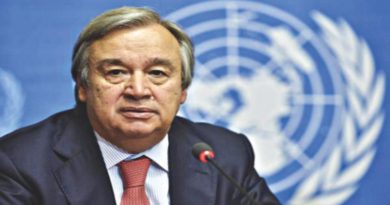Adaptation Fund receives first new $13m pledge for 2025 from Sweden
At a pivotal time when the work of the Adaptation Fund is more urgent than ever, the Fund’s resource mobilization efforts for 2025 kicked off on a positive note as Sweden stepped forward to make the first new pledge to the Fund of the year with 130 million SEK (US$ 13 million).
The pledge was announced during a high-level visit by the Fund in Sweden. The Swedish government has been one of the Fund’s most consistent contributors. Sweden is its second largest bilateral donor and has contributed more than US$ 200 million to the Fund since the Fund’s launch in 2010.
“This is an important contribution to global climate work and to support the developing countries that are hardest hit by the effects of climate change. The Swedish support will, among other things, contribute to nature-based breakwaters that will protect against rising sea levels. It will also help farmers in rural areas to better protect their land against extreme weather events,” said Swedish Minister for Development Cooperation and Foreign Trade, Benjamin Dousa.
The Adaptation Fund Board will consider setting a new resource mobilization goal for the Fund in 2025 when it meets next week for its 44th meeting in Bonn, Germany. The Fund hopes to improve upon the US$ 133 million it mobilized last year.
The Fund has been facing increasing demand for its work over the last several years as the urgency of climate change and the global adaptation financing gap have risen sharply – UNEP has estimated a gap as high as US$ 387 billion a year between what is provided and what is needed for developing countries to adapt to climate change through international adaptation public finance flows.
With a pipeline of nearly US$ 600 million of projects that have not yet been approved or funded, the Fund also has a mandate from decisions by Parties at the UN COP29 climate conference last year that calls for a tripling of outflows from 2022 levels by the Fund and other UNFCCC climate funds by 2030. This would amount to the Fund increasing to about US$ 400 million in project outflows per year.
Although the Fund will receive a 5 per cent share of proceeds from a new Carbon Crediting Mechanism under the Paris Agreement (Article 6.4) in the near future, it is unclear how much that may generate and how soon. Parties and other stakeholders using cooperative approaches under Article 6.2 of the Agreement are also strongly encouraged to make direct monetary contributions to the Fund.
It is hoped that Sweden’s valuable contribution will help set the tone for others to come forward in 2025.
“We would like to thank the Swedish government for its generous pledge, which will help further the Adaptation Fund’s tangible actions on the ground for the most vulnerable,” said Mikko Ollikainen, Head of the Adaptation Fund. “Sweden is one of our longest standing and most consistent supporters and biggest contributor on a per capita basis. Sweden’s support for the work of the Adaptation Fund through financial contributions and active engagement on the Board has been invaluable to the evolution of the Fund. Scaling up the work of the Fund is more important now than ever as we strive to meet the goals of the Paris Agreement, so no one is left behind. The Fund has further proven to deliver effectively and efficiently since its launch nearly 18 years ago.”
The longest-running fund to finance adaptation and focused on empowering vulnerable countries to adapt and build resilience to climate change through concrete projects, the Adaptation Fund has grown its portfolio to about US$ 1.25 billion committed to more than 180 projects (about half in LDCs or SIDS) serving nearly 46 million beneficiaries, training 1.55 million people in climate resilience measures, creating 577 early warning systems and 116 policies to address climate change risks, as well as preserving 728,000 ha of natural habitat and 181,000 meters of coastlines.
Projects are country-led and tailored to local adaptation needs, supporting measures that improve vulnerable communities’ resilience to climate risks from extreme weather, rising sea levels, food and water insecurity, among others. The Fund has further been a pioneer, innovating climate finance modalities such as direct access and locally led adaptation and is sharing its innovations and knowledge with the wider climate finance and development community, catalyzing additional impacts and project scale-ups beyond AF-funded activities.
Although the Fund was initially set up to receive financing from a 2 per cent share of sales of carbon emission reduction credits through the Kyoto Protocol, it has largely relied on voluntary private and public contributions since the carbon market dropped significantly in 2012. More new contributors to the Fund have come forward since it began to formally serve the Paris Agreement in 2019, and the Fund hopes to build on that and increase those numbers throughout 2025.




